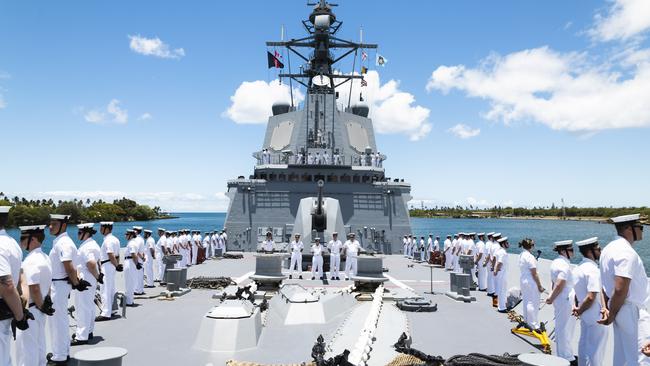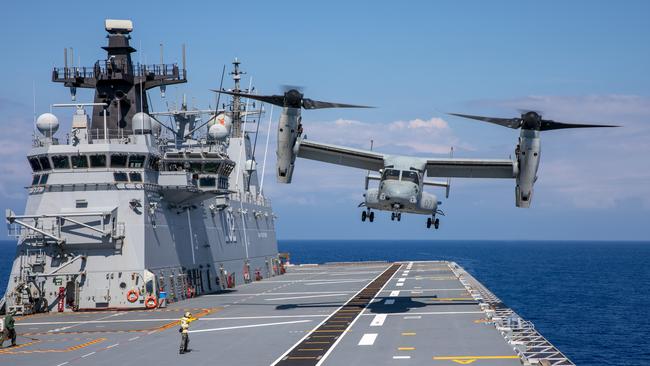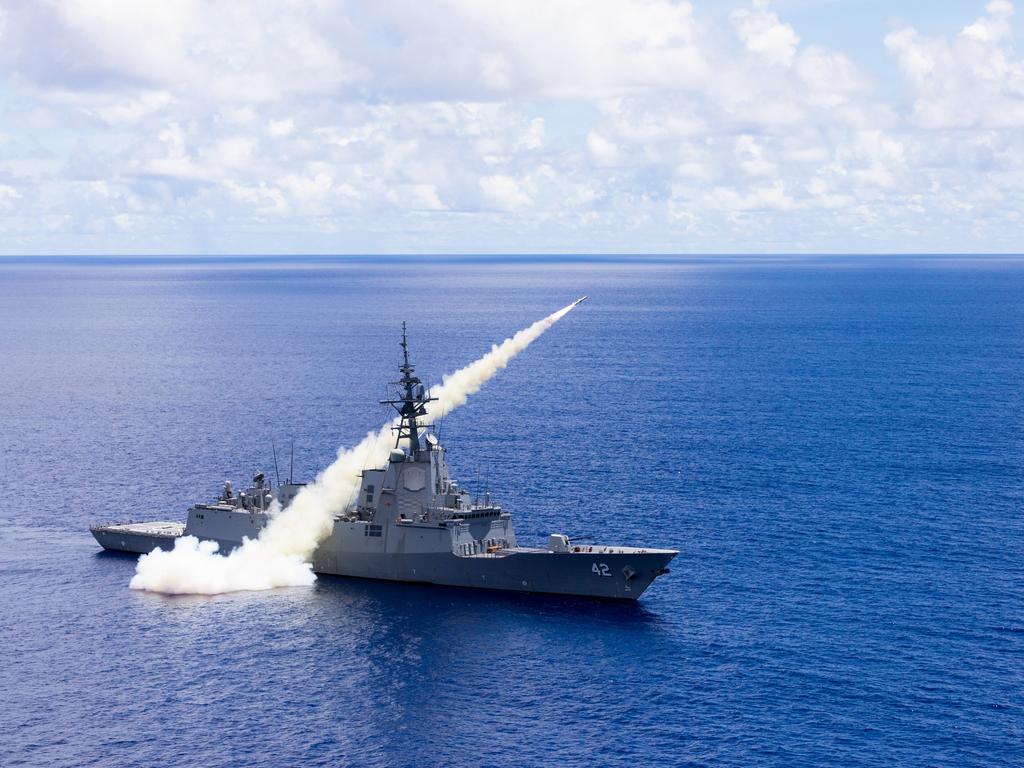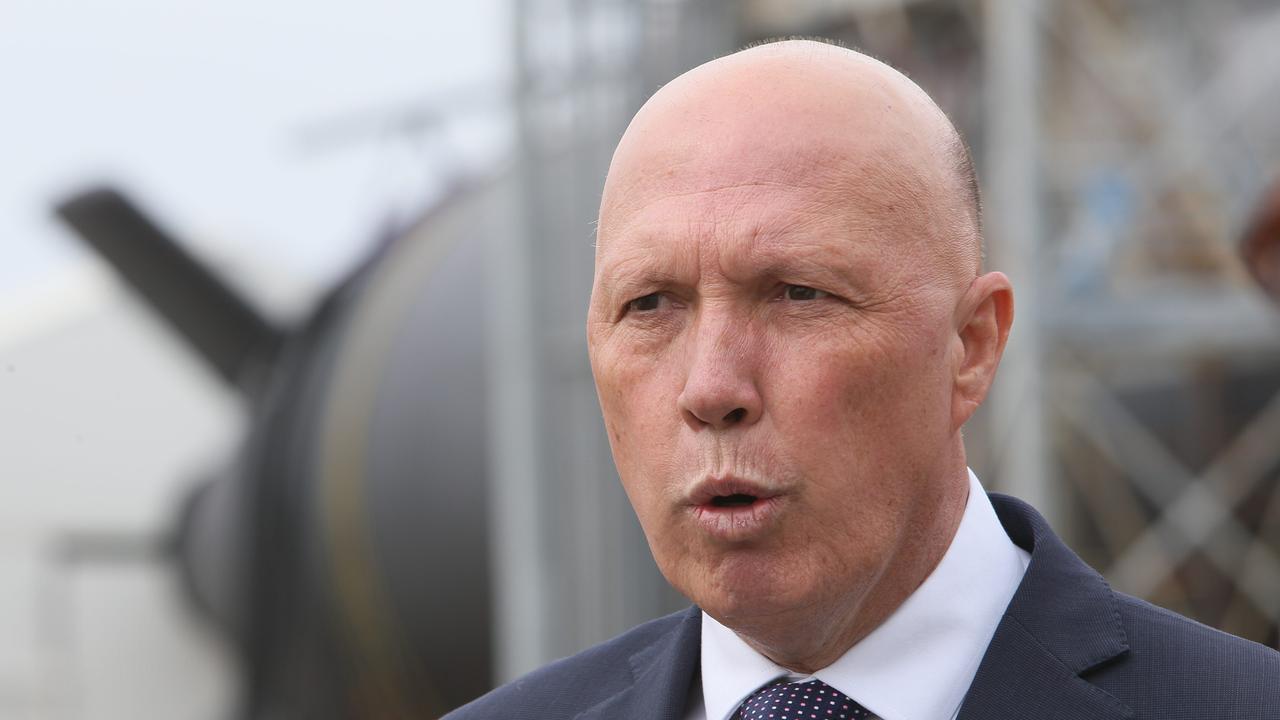Cut-back deployment sends ‘dangerous message’ on ADF capability
The Albanese government has dramatically scaled back Australia’s participation in the US’s biggest military exercise as the ADF faces a decade-long capability crisis.

The Albanese government has dramatically scaled back Australia’s participation in America’s biggest military exercise as the nation faces a decade-long capability crisis following years of under-investment in defence.
Australia’s contribution to the biennial Rim of the Pacific war games off Hawaii is the smallest in at least a decade, and comes amid Anthony Albanese’s decision to skip next week’s NATO summit in Washington in a move the Coalition has warned could signal an early election.
The Australian Defence Force has sent just 320 personnel, a single warship and one P-8A maritime reconnaissance aircraft to RIMPAC 2024, which the US has hailed as its biggest yet.
The contingent falls 80 per cent short of the nation’s 2022 contribution, when the ADF provided 1600 personnel, three surface ships, a Collins-class submarine, two Poseidon aircraft, an army combat group, and a clearance diving team.
It comes as the navy’s fleet – already one of the oldest and smallest in decades – is decimated by defects, maintenance problems and a personnel crisis that shows no signs of abating.
Former senior naval officer Jen Parker said the diminished contribution would be noted by potential adversaries, including China, and sent a “dangerous message” to Australia’s allies and partners about the nation’s capacity to deter regional threats.
“The trimmed down 2024 RIMPAC deployment, with only one ship, HMAS Sydney, is reflective of the degraded operational availability of the navy’s surface fleet,” the University of NSW naval studies fellow said.
The navy has recently retired one Anzac-class frigate and has two more out of the water in Western Australia, while three of the nation’s Collins-class subs are out of service. Its two newest ships, the replenishment tankers HMAS Supply and HMAS Stalwart, are also out of action with major mechanical issues.

“The lack of a tanker capability severely limits the navy’s projection capabilities, tying their operations to ports or relying on tankers of allies and partners,” Ms Parker said.
“Despite what is likely to be record investment, the navy’s capability issues will get worse before they get better.”
Defence Minister Richard Marles announced on Tuesday that he would represent the Prime Minister at NATO 75th anniversary conference, without offering a reason for the switch.
Mr Albanese attended the last two NATO summits with his Japanese, South Korean and New Zealand counterparts, rounding out the so-called Indo-Pacific Four – NATO’s closest partners outside the European security bloc.
Peter Dutton warned Coalition MPs the decision could be a sign the Prime Minister was preparing for an early poll, urging them to “be ready”.
He said it could also be the result of “strife” in Labor ranks, as rebel senator Fatima Payman considers her future in the party after crossing the floor on Palestinian statehood.
Opposition foreign affairs spokesman Simon Birmingham said Mr Albanese needed a “very, very compelling reason” to skip the NATO meeting, or “it would be a dereliction of duty”.
Defence’s cut-down RIMPAC deployment follows the government’s rejection of a US request last year for a warship to join an international taskforce in the Red Sea to combat attacks on shipping by Iran-backed Houthi rebels.
At the time, the government said the ADF’s resources needed to be focused on Australia’s immediate region, the Indo-Pacific.
Opposition defence spokesman Andrew Hastie said the decision to slash Australia’s RIMPAC contribution showed the nation was “shrinking on the regional stage as a military power”.
“We are unable to deploy the ADF on military exercises to our full potential, let alone assist our partners when requested – as we found out when we passed on deploying a battleship to the Red Sea,” Mr Hastie said.
“What confidence does this give our partners who are relying on us to be prepared for AUKUS? What message does this send our adversaries who are watching us like hawks?”

The move comes despite what the government has lauded as “record” levels of Defence spending, with a $5.7bn boost for the portfolio in the next four years, and an extra $50bn over the coming decade.
But the boost came with $72bn worth of cuts across the ADF to help pay for nuclear subs and promised new general purpose frigates.
Former Defence deputy secretary Peter Jennings said the government was “gutting the ADF” to pay for the future force.
“This is becoming a major crisis for the government. They are destroying the current ADF for the future submarines, which we won’t see until at the earliest until the mid-2030s,” Mr Jennings said.
He said the RIMPAC contingent sent a “terrible signal” to the US, which was already having doubts over Australia’s capabilities.
Strategic Analysis Australia research director Marcus Hellyer said the ADF was facing a capability “train wreck” that was the fault of successive governments.
“The previous government’s shipbuilding plan was an utter disaster – $10bn and we don’t have a single ship in service,” he said.





To join the conversation, please log in. Don't have an account? Register
Join the conversation, you are commenting as Logout